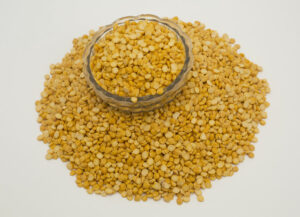Lucas Pantaleon
What is the relationship between hyperkeratosis and mastitis in dairy cows? Teat-end hyperkeratosis (THK) is a highly prevalent teat pathology affecting dairy cows. It is characterized by a hyperplasia of the keratin layer of the teat orifice as a response to chronic stimuli. Using a severity score from 1 (less severe) to 4 (most severe), studies have found a prevalence between 21% and 46% for grade 3 and between 12% and 19% for grade 4.
Anatomical and physiological mechanisms at the teat orifice play a fundamental role in protecting the mammary gland from pathogens. The stratified squamous cell epithelium acts as a physical barrier, fatty acids have bacteriostatic effects and the muscular layer keeps the teat orifice closed in between milking.
Is hyperkeratosis a risk factor for clinical mastitis?
Different factors at the cow level such as teat shape and position, stage of lactation, parity, … have been associated with the development of THK. Factors at the herd level such as milking management and equipment settings, have also been linked to THK.
A database search was carried out by a group of investigators in order to determine if THK was a risk factor for clinical mastitis (CM) and subclinical mastitis (SCM). The search yielded 18 peer review articles that were suitable for analysis.
The overall results for the scientific studies reviewed showed that severe THK was a risk factor for CM as well as SCM. Three of the studies evaluated revealed a clear temporal association between THK (especially severe) and CM. Moreover, evidence from this systematic review showed that severe THK as a strong risk factor for Staphylococcus aureus intramammary infection.
Hyperkeratosis and mastitis seem to be associated
Regarding SCM, a positive association was found when SCC (thresholds or mean) or a combination of microbiological analysis of milk and somatic cell count (SCC) threshold were used to diagnose SCM. Therefore, severe THK was a risk factor for SCM, as defined by SCC thresholds or mean SCC. The effects of severe THK on contagious (Staphylococcus aureus) and environmental CM and SCM, emphasize the importance of teat health as one key tool for controlling mastitis.
Four of the studies included in the analysis demonstrated that quarters with mild THK had a lower prevalence of intramammary infection or lower mean SCC compared with quarters with no THK. This likely supports the fact that mild THK due to a physiological response to milking, could have a protective effect against the development of mastitis. At this time more research in needed to more clearly understand this protective mechanism.
Limitations of this review were the facts that a small number of studies fitted the inclusion criteria, and most of them had issues with internal validity, thus compromising the strength of the evidence. Furthermore, different methods were used amongst the papers to define THK, CM and SCM, this prevented meta-analysis of data and comparison among different studies.
Reference
Pantoja, J.C.F., Correia, L.B.N., Rossi, R.S., Latosinski, G.S. 2020. Association between teat-end hyperkeratosis and mastitis in dairy cows: A systematic review. Journal of Dairy Science. 103(2): 1843-1855.
© 2020 Dairy Knowledge Center. All Rights Reserved.









